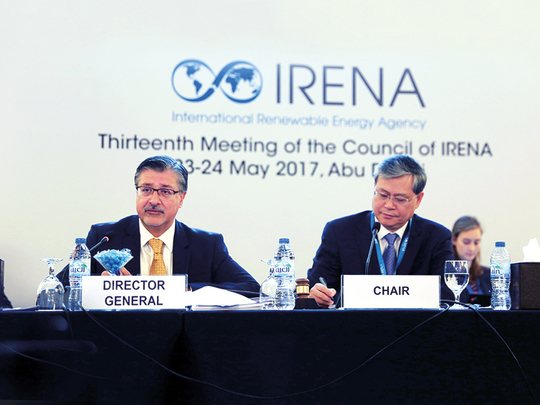
Abu Dhabi: Nearly 60 million households across the world are now powered by off-grid electricity generation sources, a top renewable energy expert said in the capital on Tuesday.
Between them, these off-grid electricity sources provide 2,800 megawatts of electricity, Adnan Z. Ameen, director-general of the International Renewable Energy Agency (Irena), said in the capital.
“Off-grid electricity today serves and benefits about 300 million people, thus improving energy access in developing countries,” Ameen said.
“So far, we have focused on the development and pricing of renewable technologies, and supported governments in the transformation of their electricity sectors. But now, energy access through [the use of renewables] has now come to the centre stage, and we must work to enhance this access in developing nations,” he added.
He was speaking at the 13th meeting of the Irena Council, which was attended by delegates from 110 member countries.
Since its establishment in 2011, Irena has been designated as the global hub for renewable energy cooperation and information exchange. The intergovernmental agency is headquartered in Abu Dhabi, and its council meets twice a year to review progress and approve the work programme and budget prior to submission and adoption by the Assembly. In turn, the Assembly that meets annually is Irena’s ultimate decision-making authority.
Speaking to the council, Ameen said that renewable sources across the world now generate more than 2,000 gigawatts of energy, with particular growth in solar.
“In 2016 alone, 161 gigawatts of generation capacity were added, and the centre of capacity growth has continued to shift to developing countries,” Ameen said.
He also noted that cost reductions in renewable technologies are promoting even higher capacity, especially as capacity increased in 2016 despite a slight decline in total investment.
“We have witnessed first-hand the dramatic changes that are taking place in the world of energy. Only in 2011, the world was wondering why the UAE as an oil-producing economy would invest so much effort in hosting a new renewable energy agency. [At that time], costs were still high, capacity additions hadn’t started to increase and people [believed there was a] competition between oil and renewables as energy sources,” Ameen said.
“Today, we have seen how these discussions have evolved. In the [Gulf] region now, discussions on renewables are not only common but insightful,” he added, citing the $50 billion planned investment by Saudi Arabia into 9.5-gigawatt of renewable capacity by 2023.












